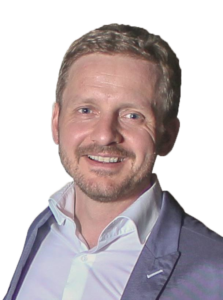News
-
Array ( [0] => September [1] => 29, [2] => 2022 )29September
2022 -
- Certificate Programs
- Certificate Programs
Shaping the future of cities – with “Digital Twins for Cities”

Dr.-Ing. Stefan Trometer is Managing Director at the software developer Virtual City Systems. He is therefore very familiar with digital city models. In a guest article for the TUM Institute for LifeLong Learning, the expert explains why “digital twins” are essential for building the cities of the future. He also passes on his knowledge in the certificate program “Digital Twins for Cities“, which will start again in February 2023 at the TUM Institute for LifeLong Learning in German.

Dr.-Ing. Stefan Trometer, Managing Director Business Development at Virtual City Systems
First things first: The 3D digital city model is much more than just a visual copy of the city, it is a digital platform for interactive planning, analysis and simulation. Thus, it contributes to the solution of some of the most pressing problems of cities in the present. It is certain that these will intensify: by 2050, about 2 billion people will migrate to urban areas. This means that cities around the world are facing the unprecedented challenge of rapidly adapting and expanding their infrastructure to be safe, sustainable and liveable for their citizens.
So why is the digital twin exactly the right technology? The increasing growth of cities and climate change pose major challenges for the design of urban space. How does the wind flow change in a new building? How do we deal with the discovery of a bomb in densely populated urban areas? These and other questions must be answered today for the well-being and protection of the population as well as for contributing to climate change adaptation and to a safe and livable city. It takes the best possible predictions to identify potential or estimate dangers. What is the evacuation radius of a bomb? Should the hospital be completely evacuated?
Digital twin creates the basis for data-driven design decisions
In view of the increasing complexity resulting from the complex requirements for urban planning, a digital twin offers further advantages. Although it requires a wider range of data sources and greater involvement of contributors, it saves time and money in the end. First of all, there is no need for physical and true-to-scale models, because the processes are digitized. In addition, the twin promotes the opportunity to experiment within the model without risk. City administrations, experts, institutions and private individuals can test and improve their cooperation.
The smarter design decisions resulting from the model make cities safer, cleaner – and by extension, digital twins are also invaluable in the fight against climate change. Because: In order to achieve climate neutrality, countless interactions in the energy system of a city must be taken into account. The digital twin helps to make these complex relationships visible.
Simulation of wind and solar radiation possible
A practical example: wind conditions have a great influence on the durability and functionality of urban structures, as well as on the comfort and safety of citizens. Wind simulation enables comfort studies and the investigation of emission spreads in urban areas. By coupling analyses of solar radiation with wind and thermal simulations, for example, urban heat effects such as urban heat islands can be investigated. By mapping the emission and flow behavior of particles, it is possible, among other things, to map the dispersion of particulate matter in urban areas.
Certificate program “Digital Twins for Cities”
The part-time certificate program “Digital Twins for Cities” will start again in February 2023 in German. It is aimed at executives and project managers from urban planning and architecture, planning employees of municipal institutions as well as specialists from the fields of smart city, surveying and geo-information. Participation is limited to 20 people, registrations are now possible. Further information on course content and registration process can be found here.

